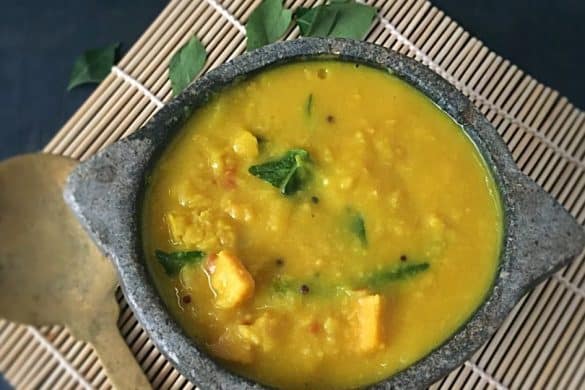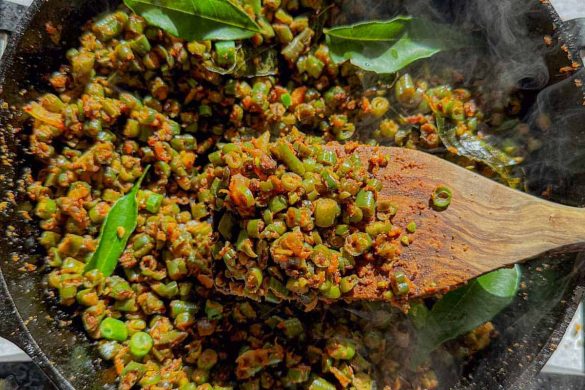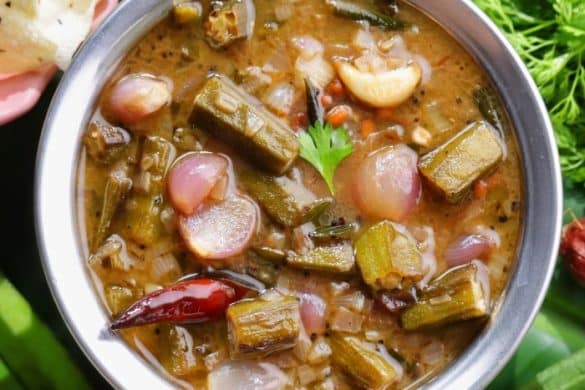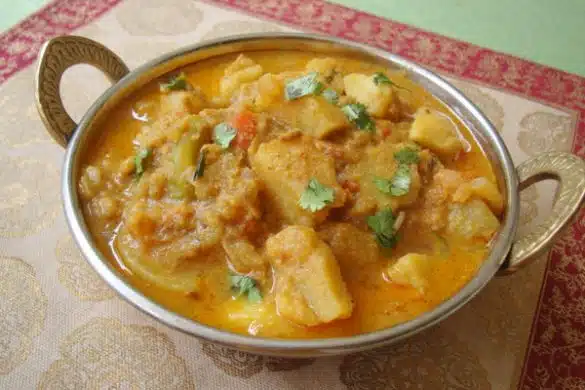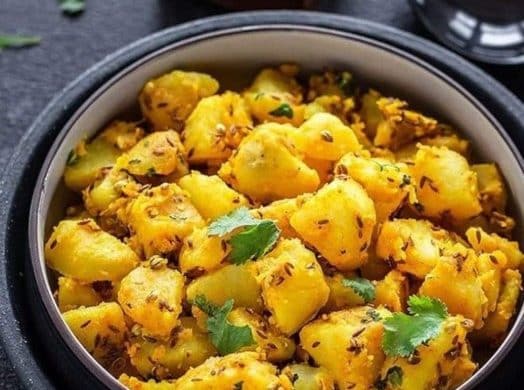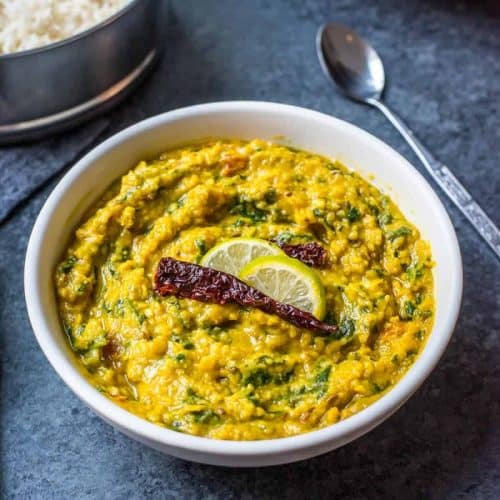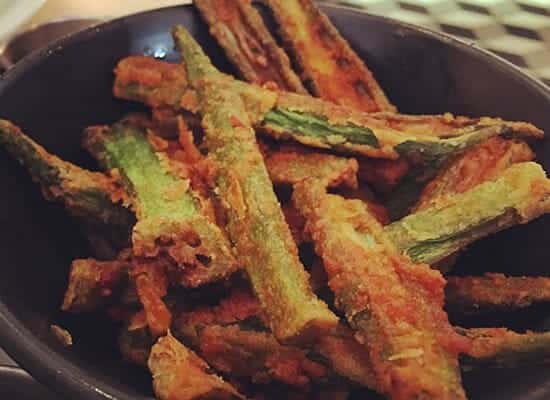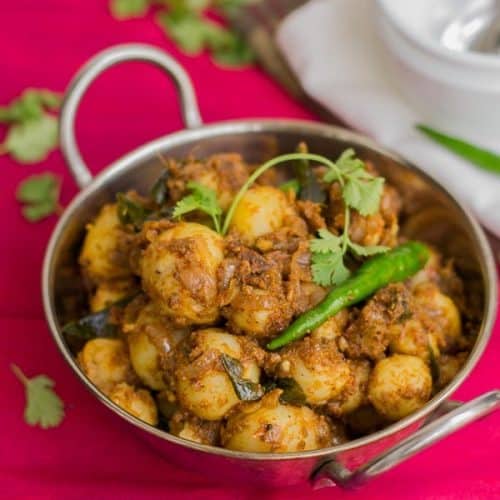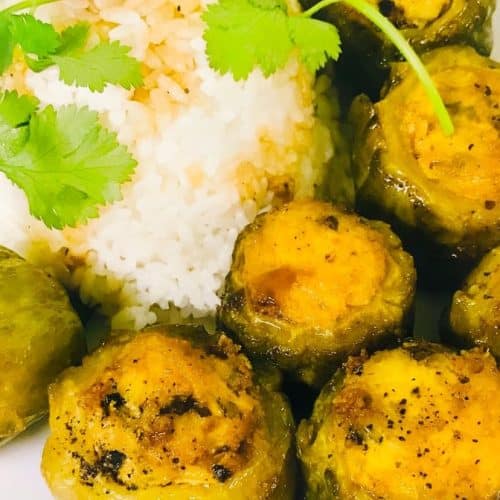A traditional rajasthani dish.
Gatte Ki Sabji brings the authentic taste of Rajasthan to your kitchen. This dish combines gram flour dumplings or gatte with spicy and tangy yoghurt-based gravy. The blend of spices in the gravy infuses the dish with a vibrant flavour, making it a popular choice for special occasions and everyday meals. Gatte Ki Sabji pairs wonderfully with steamed rice or roti, offering a complete and satisfying meal.
About the Recipe
Gatte Ki Sabji is a dumpling made from gram flour that is boiled and then simmered in a yoghurt gravy seasoned with cumin, asafoetida, and a blend of traditional Indian spices. This dish showcases the culinary heritage of Rajasthan, where ingredients are often minimal but used to maximize flavour. The recipe’s balance of spice and creaminess makes it a delightful dish for those who enjoy exploring regional Indian cuisines.
Why You Will Love This Recipe
You’ll love Gatte Ki Sabji for its robust flavours and comforting nature. The gram flour dumplings add a delightful texture that contrasts perfectly with the smooth, spiced yoghurt gravy. This dish is hearty and satisfying, making it an excellent choice for a family dinner. Plus, the ingredients are simple and easy to find, ensuring you can recreate this Rajasthani favourite anytime you crave it.

Gatte Ki Sabji
Cooking Tips
For the best Gatte Ki Sabji, ensure the dough for the gattas is kneaded well to achieve the right consistency. Boil the gattas until they float to the top, indicating they are cooked through. When making the gravy, continuously stir the yoghurt to prevent curdling and achieve a smooth, creamy texture.
Cultural Context
Gatte Ki Sabji is a traditional Rajasthani dish often prepared during festivals and special occasions. Its gram flour and spices use reflects the region’s arid climate and reliance on shelf-stable ingredients. This dish is a staple in Rajasthani households, showcasing the ingenuity of the cuisine in creating flavorful meals with limited resources.
Serving and Storing Suggestions
Serve Gatte Ki Sabji hot with steamed rice, roti, or paratha. This dish serves 4-6 people and takes about 30 minutes of active cooking, with a total preparation time of around 45 minutes. Leftovers can be stored in an airtight container in the refrigerator for up to 2 days and reheated gently before serving.
Other Similar Recipes
- Kadhi Pakora
- Rajma Masala
- Aloo Gobi
- Paneer Butter Masala
Nutrient Benefits
Gram flour, the primary ingredient in Gattas, is high in protein and fibre, making this dish nutritious. Yoghurt adds probiotics and calcium, supporting digestive health and strong bones

Gatte Ki Sabji
Ingredients
- 1 Cup Gram Flour
- 1 Cup Curd
- 2 Tbsp Oil
- 1 1/2 Tsp Coriander Powder
- 1 Tsp Red Chilli Powder
- 1/2 Tsp Turmeric Powder
- 1/2 Tsp Black Pepper (Coarsely Ground)
- 1/2 Tsp Cumin Seeds
- 1/2 Tsp Aniseed
- 1 Tsp Coriander Seeds
- 1/2 Tsp Garam Masala
- A Pinch of Asafoetida
- 2 Tbsp Chopped Coriander Leaves
- Salt to Taste
Instructions
- Mix the gram flour, 1/2 tbsp salt, 2 tsp oil, 1/4 tsp each of cumin, aniseed, coriander seeds, and black pepper until it resembles breadcrumbs. Knead with water to form a dough.
- Divide the dough into four parts and roll each into a cylinder.
- Boil water in a deep pan, add the gattas, and cook for 10 minutes on medium heat. Cool and cut into roundels. Reserve the water for gravy.
- Heat oil in a pan; add cumin, aniseed, and asafoetida. Make a paste of the remaining spices with 2 tbsp water.
- Add the spice paste to the oil and fry. Add the curd and cook until the oil separates. Add 2 cups of reserved water and bring to a boil.
- Add the gattas to the gravy and simmer for 10 minutes. Sprinkle garam masala and coriander leaves. Serve hot.
Sign up for our newsletter
Frequently Asked Questions
What can I serve with Gatte Ki Sabji?
Gatte Ki Sabji pairs beautifully with steamed rice or Indian bread like roti, paratha, or naan. For a complete meal, you can also serve it with a side of fresh salad or pickles. This versatile dish complements various Indian accompaniments, making it a favourite in many households.
Can I make Gatte Ki Sabji ahead of time?
Yes, you can prepare Gatte Ki Sabji ahead of time. Cook the gattas and the gravy separately, then combine and reheat them before serving. This method helps maintain the texture of the gattas and keeps the gravy fresh. Store leftovers in an airtight container in the refrigerator for up to two days.
How do I prevent the yoghurt from curdling in Gatte Ki Sabji?
To prevent the yoghurt from curdling, use fresh yoghurt at room temperature and continuously stir it while adding it to the hot pan. Lower the heat before adding the yoghurt, and cook it slowly. This method ensures a smooth and creamy gravy without any lumps.
Can I use whole spices instead of ground spices?
Using whole spices can enhance the flavour of Gatte Ki Sabji. Toast and grind the whole spices before adding them to the dish for a more aromatic and intense flavour. Whole spices like cumin seeds, coriander seeds, and black pepper can add depth to the gravy, making it even more delicious.
Is Gatte Ki Sabji gluten-free?
Yes, Gatte Ki Sabji is gluten-free as it uses gram flour made from chickpeas instead of wheat flour. Ensure all other ingredients, such as spices, are gluten-free and have not been cross-contaminated. This makes the dish suitable for those with gluten sensitivities or celiac disease.

